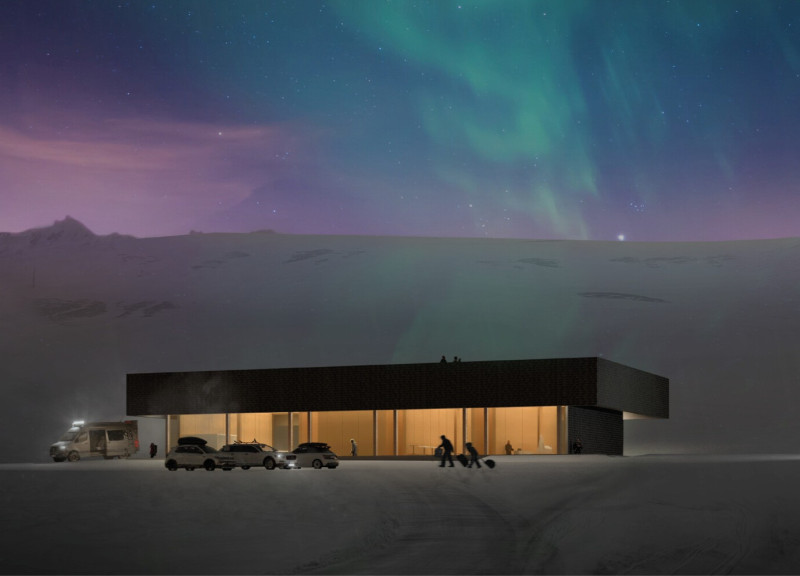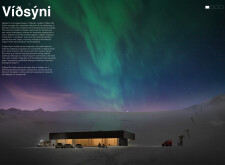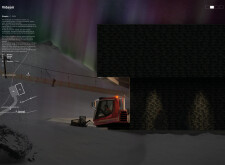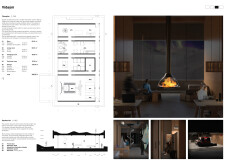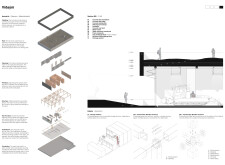5 key facts about this project
# Architectural Design Analysis Report: Viósýni Ski Cabin
## Overview
Located in the Mývatn region of Iceland, the Viósýni Ski Cabin is designed to enhance visitor engagement with the dramatic volcanic landscape while serving as a functional retreat for outdoor enthusiasts. The cabin's architectural intent centers on creating a harmonious relationship with the surrounding environment, reflecting the area's natural characteristics through its form and materials.
## Spatial Strategy
The spatial organization of the cabin is carefully planned to maximize connection with the landscape and enhance user experience. Upon entry, visitors encounter a modest information center that provides essential updates while fostering an immersive relationship with the environment. The design incorporates reception and lounge areas that prioritize views of the Northern Lights, integrating natural phenomena into the interior. Functional zones, including changing rooms and technical spaces, are strategically positioned to serve both practical needs and promote social interaction, while features such as an interactive display educate visitors about local ecology.
## Materiality and Sustainability
The material selection for the Viósýni Ski Cabin primarily emphasizes local resources, aligning the cabin's aesthetic with its environmental context. Composite cladding made from local magma stone and Icelandic Sitka spruce structural elements not only provide durability but also embody the region's geological identity. The roof design mimics local topography and doubles as a viewing deck, enhancing visitor engagement with the landscape. Sustainable practices are further reinforced through geothermal energy integration, utilizing local thermal power plants to minimize ecological impact and enhance energy efficiency. The foundation employs a concrete slab supplemented with an effective drainage system, ensuring stability and addressing site hydrology. Interior furnishings, made from natural fibers, contribute warmth and enhance overall occupant comfort.


